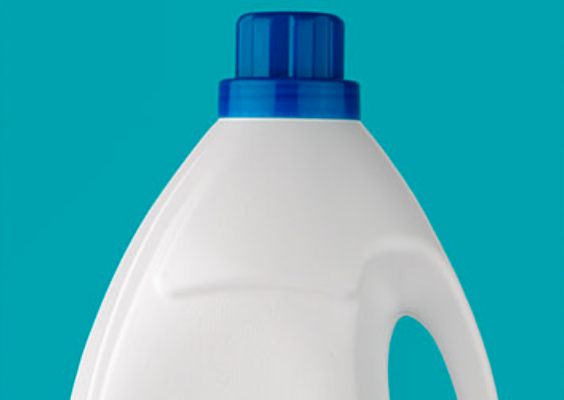Key Points/Overview
Sodium hydroxide is used to help manufacture a variety of medicines and pharmaceutical products, including aspirin, anticoagulants and cholesterol-reducing medications.
In the energy sector, sodium hydroxide is used in fuel cell production. Fuel cells can cleanly and efficiently produce electricity for a range of applications, including transportation; materials handling; and stationary, portable and emergency backup power applications.
Municipal water treatment facilities use sodium hydroxide to control water acidity and to help remove heavy metals from water. Sodium hydroxide is also used to produce sodium hypochlorite, a water disinfectant.
OSHA has set guidelines and permissible exposure limits for workers in industries and facilities where sodium hydroxide substances are used. The National Institute for Occupational Safety and Health provides general safety information about transporting sodium hydroxide. The FDA allows sodium hydroxide as a food additive at levels lower than 1 percent.
Uses & Benefits
Sodium hydroxide is used to manufacture many everyday products, such as paper, aluminum, commercial drain and oven cleaners, and soap and detergents.

Sodium Hydroxide in Cleaning & Disinfectant Products
Sodium hydroxide is used to manufacture soaps and a variety of detergents used in homes and commercial applications. Chlorine bleach is produced by combining chlorine and sodium hydroxide. Drain cleaners that contain sodium hydroxide convert fats and grease that can clog pipes into soap, which dissolves in water.

Sodium Hydroxide in Pharmaceuticals & Medicine
Sodium hydroxide is used to help manufacture a variety of medicines and pharmaceutical products, from common pain relievers like aspirin, to anticoagulants that can help to prevent blood clots, to cholesterol-reducing medications.

Sodium Hydroxide in Energy
In the energy sector, sodium hydroxide is used in fuel cell production. Fuel cells work like batteries to cleanly and efficiently produce electricity for a range of applications, including transportation; materials handling; and stationary, portable and emergency backup power applications. Epoxy resins, manufactured with sodium hydroxide, are used in wind turbines.

Sodium Hydroxide in Water Treatment
Municipal water treatment facilities use sodium hydroxide to control water acidity and to help remove heavy metals from water. Sodium hydroxide is also used to produce sodium hypochlorite, a water disinfectant.

Sodium Hydroxide in Food Production
Sodium hydroxide is used in several food processing applications, such as curing foods like olives or helping to brown Bavarian-style pretzels, giving them their characteristic crunch. Sodium hydroxide is used to remove skins from tomatoes, potatoes and other fruits and vegetables for canning and also as an ingredient in food preservatives that help prevent mold and bacteria from growing in food.

Sodium Hydroxide in Wood & Paper Products
In many paper making processes, wood is treated with a solution containing sodium sulfide and sodium hydroxide. This helps dissolve most of the unwanted material in the wood, leaving relatively pure cellulose, which forms the basis of paper. In the paper recycling process, sodium hydroxide is used to separate the ink from the paper fibers allowing the paper fibers to be reused again.
Sodium hydroxide is also used to refine raw materials for wood products such as cabinets and furniture and in wood bleaching and cleaning.

Sodium Hydroxide in Aluminum Ore Processing
Sodium hydroxide is used to extract alumina from naturally occurring minerals. Alumina is used to make aluminum and a variety of products including foil, cans, kitchen utensils, beer kegs and airplane parts. In building and construction, aluminum is used in materials that enable building facades and window frames.

Sodium Hydroxide in Other Industrial Manufacturing Uses
Sodium hydroxide is used in many other industrial and manufacturing processes. It is used to manufacture rayon, spandex, explosives, epoxy resins, paints, glass and ceramics. It is also used in the textile industry to make dyes, process cotton fabric and in laundering and bleaching, as well as in metal cleaning and processing, oxide coating, electroplating and electrolytic extracting.

Safety Information
Due to its strong corrosive qualities, exposure to sodium hydroxide in its solid or solution form can cause skin and eye irritation, according to the U.S. Centers for Disease Control and Prevention Agency for Toxic Substances and Disease Registry. Workers in facilities where sodium hydroxide is manufactured or used should follow product safety instructions.
The U.S. Occupational Safety & Health Administration (OSHA) has set guidelines and permissible exposure limits for workers in industries and facilities where sodium hydroxide substances are used, available on OSHA’s website.
The National Institute for Occupational Safety and Health provides general safety information about transporting sodium hydroxide, including guidance on packaging and storage, spillage, disposal, and packaging and labeling for workers.
The Food and Drug Administration (FDA) allows sodium hydroxide as a food additive at levels lower than 1 percent.


